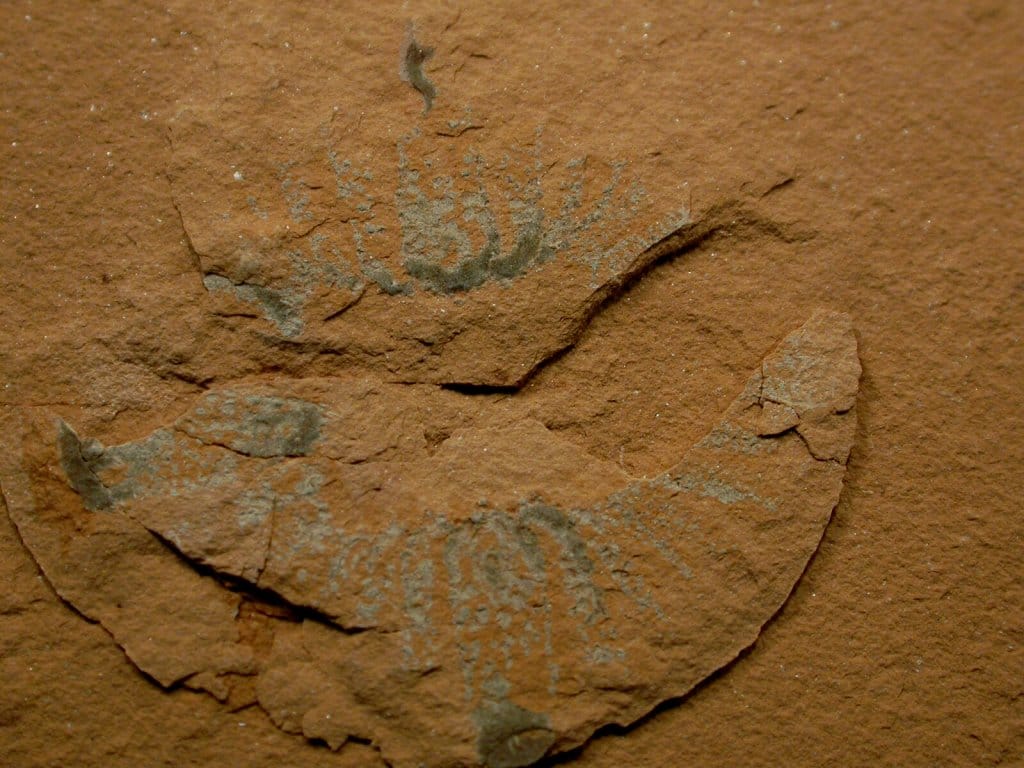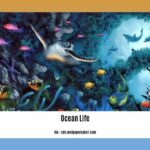A Cambrian Terror Emerges
Journey back over 500 million years to the Cambrian Period, when Earth’s oceans teemed with bizarre creatures. Among them was Anomalocaris, a fierce predator that has captivated paleontologists for decades. Its unusual anatomy, including grasping claws and multifaceted eyes, has provided invaluable insights into this pivotal period in life’s history.
Piecing Together the Anomalocaris Puzzle
Early discoveries of Anomalocaris fossils presented a significant challenge to scientists. Fragmented remains led to misidentifications, with its spiny appendages initially mistaken for shrimp tails and its circular mouth misconstrued as a jellyfish. It took the meticulous work of researchers like Harry B. Whittington and Simon Conway Morris to finally reconstruct Anomalocaris, revealing a creature far stranger than anyone had imagined.
Apex Predator of the Cambrian Seas
Anomalocaris was a formidable predator, likely reaching lengths of up to two feet—a giant in a world of much smaller marine life. Its spiny appendages, likely used for grasping prey, suggest a diet of trilobites and other hard-shelled creatures. Fossilized evidence supports this theory, with trilobite shells bearing distinct Anomalocaris-shaped wounds.
Astonishing Eyes: A Visionary Predator
One of the most remarkable features of Anomalocaris is its eyes. These compound eyes, made up of thousands of individual lenses, are remarkably similar to those found in modern insects but predate them by millions of years. This advanced vision likely gave Anomalocaris an edge in the murky depths of the Cambrian oceans, allowing it to effectively hunt prey and navigate its environment.
A Global Reign: Anomalocaris Fossil Locations
While the Burgess Shale in Canada stands out as the primary source of well-preserved Anomalocaris fossils, discoveries from across the globe suggest a widespread distribution. Fossil sites in China, Greenland, Australia, and the United States point to a creature that thrived in ancient oceans worldwide.
Unraveling the Mysteries of the Cambrian Explosion
The study of Anomalocaris has been instrumental in understanding the Cambrian Explosion, a period marked by an unprecedented diversification of life. This “abnormal shrimp” highlights the incredible evolutionary experimentation that took place during this time, providing a glimpse into the origins of the diverse life forms we see today.
Are Anomalocaris Fossils Rare?
Given its age and the challenges of fossilization, complete Anomalocaris fossils are indeed rare. Soft-bodied organisms like Anomalocaris are less likely to fossilize than creatures with hard shells or skeletons. However, the Burgess Shale’s unique conditions have preserved a wealth of these ancient creatures, offering a remarkable window into the Cambrian world.
While complete specimens are uncommon, isolated mouth parts and appendages are more frequently discovered. These fragments, scattered throughout the fossil record, provide valuable clues about Anomalocaris’s predatory behavior and distribution.
Where Are Anomalocaris Fossils Found?
Anomalocaris fossils have been unearthed from ancient seabeds around the world, testament to their global presence during the Cambrian Period. Here are some key locations:
- Canada: The Burgess Shale in Yoho National Park, British Columbia, is renowned for its exceptionally well-preserved Anomalocaris fossils, particularly the species Anomalocaris canadensis.
- Australia: The Emu Bay Shale on Kangaroo Island, South Australia, has yielded fossils of Anomalocaris daleyae, a slightly older species.
- China: Multiple sites, including the Chengjiang Biota, the Hongjingshao Formation, and the Balang Formation, have provided valuable Anomalocaris specimens.
Did Anomalocaris Really Exist?
The evidence overwhelmingly confirms that Anomalocaris was a real creature that thrived in Earth’s ancient oceans. While initial fossil discoveries led to confusion and misidentification, painstaking research has revealed its true nature as a fearsome predator with a unique anatomy.
The story of Anomalocaris is a testament to the constantly evolving nature of scientific understanding. Fossil discoveries from around the globe continue to refine our knowledge of this remarkable creature and its place in the grand tapestry of life.
Discover the captivating allure of ambergris whale perfume, an exquisite fragrance crafted from the precious substance found in the digestive tract of sperm whales. Dive into the enigmatic world of anglerfish nemo, and unravel the secrets of this deep-sea creature that has captivated oceanographers and filmmakers alike.
- Unlock Water’s Symbolism: A Cross-Cultural Exploration - April 20, 2025
- Identify Black and White Snakes: Venomous or Harmless? - April 20, 2025
- Unlocking Potential: Origins High School’s NYC Story - April 20, 2025
















1 thought on “Anomalocaris Fossils: Unearthing the Cambrian Terror and Its Astonishing Eyes”
Comments are closed.